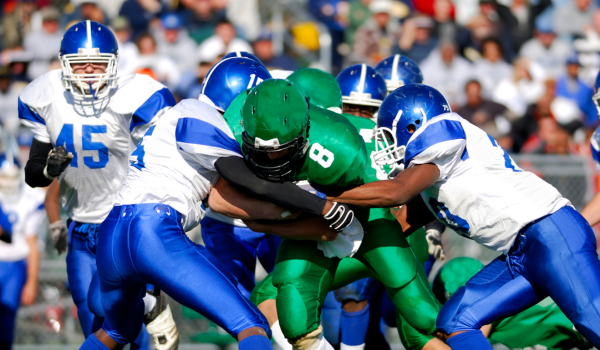You know you have the inner drive and the ability to take your game to the collegiate level, but don’t lose sight of keeping up with your academics to maintain your eligibility and unlock even more opportunities — whether it’s scholarships, college admissions, or even career paths after sports. Read on to discover how student-athletes use the ACT to gain a performance edge on their path to college. Plus, we’ll look at how strategies like redshirting can set you up for success in your athletic and academic journeys.
ACT as a Tool for Student-Athletes
The ACT isn’t just for academic programs — it’s a key tool for student-athletes seeking the right college on and off the field. Recruiters want students who can juggle sports and academics; if your grades slip, you might lose your spot on the team. Prioritizing your classwork and graduation requirements is essential, so be vocal and get help right away if you’re falling behind.
When applying to colleges, a strong ACT score can help you show coaches you’re ready to handle both athletic and academic demands. Plus, the ACT opens doors to non-athletic scholarships, giving you more options in choosing the best college for your academic, athletic, and personal goals.
NCAA Eligibility and the ACT
Whether you’re aiming for Division I, II, or III sports, academics play a big role in your eligibility to compete. While the ACT is no longer required for NCAA eligibility, it can still be an important part of the process. Beyond college admissions and scholarships, the ACT College Readiness Benchmarks predict how well you can expect to perform academically in your first year on campus. That insight can help you stay ahead of any eligibility issues by letting you know where you might need to apply extra studying effort.
Here’s a breakdown of academic standards across the divisions:
NCAA Division |
Recruitment Eligibility Requirements |
College Eligibility Requirements |
Key Differences |
Division I |
16 core courses (English, math, science, social science) Minimum 2.3 GPA in core courses |
Maintain a 2.0 GPA minimum |
Offers the most athletic scholarships and highest level of competition. |
Division II |
16 core courses (similar subjects as D1) Minimum 2.2 GPA in core courses |
Maintain a 2.0 GPA |
Offers fewer athletic scholarships, with a focus on balance between academics and sports. |
Division III |
No specific NCAA GPA requirements. Meet school admissions standards |
Meet school’s GPA and credit hour requirements |
Does not offer athletic scholarships but prioritizes academics over athletics. |
Meeting or exceeding these standards helps ensure you can compete, while also positioning yourself as a strong candidate for admissions and scholarships. Keeping a strong ACT score in your application toolkit can be a crucial asset as you navigate the college recruitment process.
Walk-ons and Redshirting
Some athletes join college teams as walk-ons, competing without a scholarship but with the potential to earn one later. Another option is redshirting, where athletes sit out a season to extend their eligibility without playing. Not everyone can redshirt — there are NCAA rules limiting participation to ensure eligibility. Redshirting offers a valuable academic advantage by giving athletes extra time to adjust to college life, focus on coursework, and manage their GPA without the pressure of competing right away.
Preparing for Life After Sports
While college athletics can open doors, it’s essential to think about what comes next. Whether your goal is to go pro or pursue a different career, having a plan for life after sports is crucial. Now’s the time to take advantage of a free MyACT account that offers resources to catalog your interests and generate career and major maps to help guide you toward academic paths and careers that fit your strengths and interests. Using these tools now can make a big difference in your plans, so make sure you’re set up for long-term success beyond the game.
Huddle Up
Balancing academics with athletics is no small feat, but it’s a critical part of preparing for your future — whether in sports or beyond. By using the ACT to strengthen your academic profile, understanding NCAA eligibility requirements, and considering opportunities like redshirting, you’ll be setting yourself up for success both on the field and in the classroom. Don’t forget to make full use of tools like MyACT to sketch out your future and make informed decisions about your academics, career paths, and life goals. You’re no stranger to hard work, and a little extra effort and planning now will help ensure a brighter future no matter where your journey takes you.
